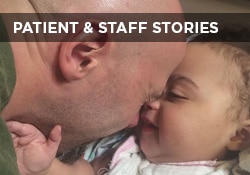This website uses cookies so that we can provide you with the best user experience possible. Cookie information is stored in your browser and performs functions such as recognising you when you return to our website and helping our team to understand which sections of the website you find most interesting and useful.

Susan E. Mazer, Ph.D. Blog
Thoughts and ideas on healthcare
Hi, and welcome to my blog! I'm Susan E. Mazer -- a knowledge expert and thought leader on how the environment of care impacts the patient experience. Topics I write about include safety, satisfaction, hospital noise, nursing, care at the bedside, and much more.
What Informs the Patient Experience?
May 24, 2013
 Continuing from my last post, I am on the same path, telling the same story, this time adding more density to the argument. There are three critical factors that inform the patient experience: (1) the acuity of the patient; (2) the acuity of the caregiver; and (3) the acuity of the environment of care.
Continuing from my last post, I am on the same path, telling the same story, this time adding more density to the argument. There are three critical factors that inform the patient experience: (1) the acuity of the patient; (2) the acuity of the caregiver; and (3) the acuity of the environment of care.
Higher patient acuity means that patients are sicker, which they are. Higher staff acuity (if they are at work, at the bedside) means that a caregiver, nurse, physician, or others, are highly stressed and their capacity to respond is compromised. Nurse burnout, more common than any of us want to know, is the point at which the acuity of a nurse has moved from chronic to acute.
Then, the acuity of the environment — something usually not discussed using this metaphor — refers to whether the environment itself is toxic or healing; safe or risky; calming or agitating. The environment clearly impacts both the nurse and the patient. The patient, nurse, and environment are unified, indistinct from each other in their interactions. And each change accordingly, continually responding to the moment.
Which informs the patient experience the most? The environment informs the nurse, the nurse becomes the environment to the patient, and the patient’s experience reflects both. Rephrasing the Beryl Institute’s definition of the patient experience, “a patient’s experience is the sum of all environmental interactions, perceived through his/her individual’s culture, circumstance, relationships, and expectations, that influence how they make meaning of what is happening to them.”
At the HeartMath Best Practices conference last week, the word of the day was “self-care” — taking care of the staff so that they can take care of themselves and be better caregivers. HeartMath is working with hospitals nationally, and a few presented their methodologies and data at the conference.
These hospitals used a POQA chart (Personal and Organizational Quality Assessment) to track staff progress, measuring a baseline, and then two weeks and beyond again to see results. Qualities and experiences such as anxiety, tiredness, and motivation were analyzed, as well as clarity of goals, intention to leave the organization (or career), moral issues, and confidence in the organization.
Each of these qualities contributes to either resilience or turnover; to wellness or illness — depending on whether the response is positive or negative. The HeartMath education and self-care tools for staff have the power to inform the patient experience, which in turn can impact HCAHPS scores and the economic status of the organization. As a systems thinker, I saw all of these parts operating like a Rubik’s Cube of healthcare, forever changed by one single event.
It’s time to invest in the patient by investing those who provide their care.










